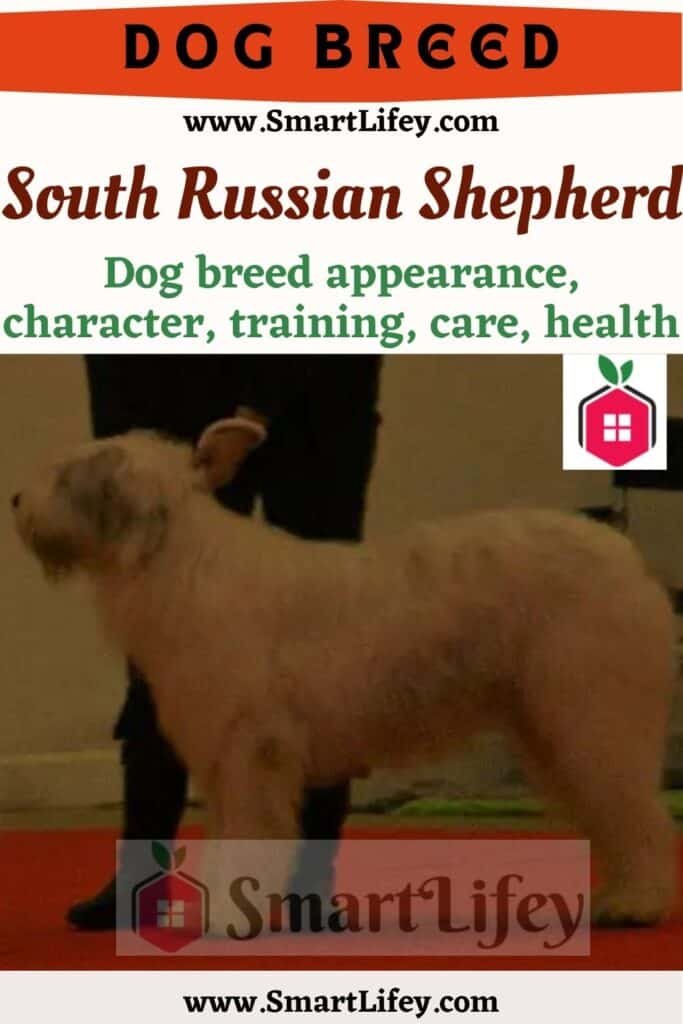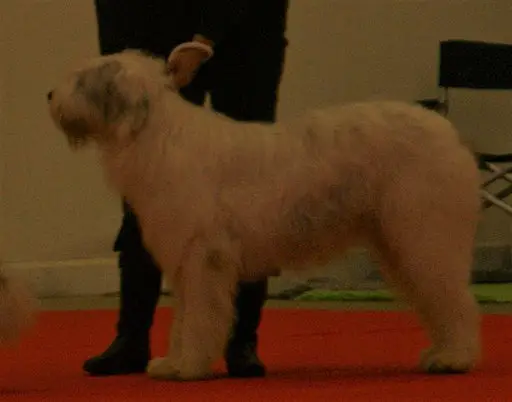
The Southern Russian Sheepdog breed impresses with its large size and long white hair that covers the entire body. It has a strong, vigorous and courageous character. At Petlifey, we explain the characteristics and character of the southern Russian shepherd.
Character of the South Russian Shepherd
The pastor of southern Russia has a character strong, balanced, impetuous. It is a dog with a vigorous behaviour, a dominant reaction and an active form of defence.
Due to its reserved temperament, it is suspicious of strangers and may even bite.
- Energy: High level. You need to get plenty of exercise and run free through wide open spaces.
- Temperament: It is a vigorous, impetuous, vigilant, strong animal, with great courage and courage.
- Adaptability: Low. It does not live well in the city, since it needs large outdoor spaces.
- Sociability: Medium / low. An unwavering guardian, it is suspicious of strangers and even becomes aggressive. It can be very rough and domineering, requiring a skilled master.
- Health: Good. Due to its size, it can suffer from gastric problems.
- Longevity: Low. Live between 8 and 10 years.
- Utility: Versatile. It basically works as a herding, guard and defence dog.
Can you live in an apartment or in the city?
It is not the ideal dog to live in a flat or in the city, because it needs large open spaces and it likes to exercise a lot on a daily basis.
Is it a suitable dog for beginners?
It is not a suitable dog for beginners, since it requires a strong hand to educate it from a puppy, with consistency and justice, if you want to obtain all its virtues and want to temper its character, which, on occasions, can become too much rough.
With strangers it is quite suspicious, to the extent that it is not advisable to leave them alone in its presence, since it is an unbreakable guardian and defends its territory and its own to the limit of its strength.
Although the Southern Russian Shepherd is beginning to be known outside of Russia, Ukraine and other former Soviet republics, it is in these places where the breed has been most used as a utility dog, as it is common to see it in protection work with members of the army or of the forces of public order, tasks in which it performs perfectly.
Is it a good family dog?
With this breed it should always be remembered that, although it can be a great family dog, it is not in the strict sense a companion animal.
Due to its origin and role as a shepherd dog, its defensive and authoritarian nature can emerge at any time, triggering unforeseen and sometimes undesirable reactions.
Is it a good dog with children?
It is very affectionate and friendly with the family it lives with, to which it dedicates all its affection.
Even so, due to its strength and large size, it should not be left in the company of children without adult supervision. It would be the first time that, involuntarily, a dog threw a little one to the ground.
How does it behave with other pets?
The Southern Russian Shepherd can live with other animals, but it must be accustomed to this from a young age, since it tends to be very dominant with all those who live in its environment, even with people.
Characteristics of the South Russian Shepherd
The physical characteristics of the Southern Russian Shepherd are impressive. It is a large mountain shepherd, endowed with great strength and endurance, and who is used to living in the most adverse conditions.
Of robust constitution, the size of these dogs is above average. Slender and solid-boned, they have highly developed musculature. They easily adapt to various climatic and temperature conditions.
How is the South Russian Shepherd breed physically?
Body
Its body is large, solid, robust, endowed with powerful bones and strong muscles. Its body structure is rectangular, since the length of the body is greater than its height at the withers, which in males is usually around 67 cm and in females it is usually around 64 cm. It is covered by a mantle of abundant long, light hair.
Its head is elongated in shape, large and broad, and has a fairly broad forehead. With a shallow stop, the muzzle is broad and robust, ending in a large, black nose.
The Southern Russian Shepherd has large, compact feet, oval in shape and well covered with long, thick hair. They are slightly arched.
Its tail is set high, reaches the hock and takes the shape of a sickle or hook. It is covered with a lot of hair and some specimens are amputated.
Hair
The coat of this dog is one of its distinctive features. Very long (up to 15 cm), dense and with abundant undercoat, it protects it from the intense cold and snow, typical of its area of origin.
The hair is slightly wavy and is usually white, or yellowish-white, straw-colored, greyish (ash gray), or other shades of gray.
Movement
The trot and gallop are the natural movements of the Southern Russian Shepherd. Both show free and wide steps.
During the trot, the legs move in a straight line, with a slight approach to the midline. The joints of the forelimbs and hindquarters rise freely.
Southern Russian Shepherd breed standard
- Origin: Russia and Ukraine.
- Size: Very large.
- Height at the withers: between 65 and 70 cm for males and between 62 and 67 cm for females.
- Weight: between 45 and 50 kg for males and between 40 and 45 kg for females
- Other names: South Russian Shepherd Dog / Berger de Russie méridionale / Südrussischer Ovtcharka / Ioujnorousskaia Ovtcharka.
- Utilization: Grazing and guarding.
- Head: It has an elongated shape and the forehead is moderately broad.
- Nose-frontal depression (stop): Not very pronounced.
- Muzzle: It is wide and powerful.
- Nose: It is large and black.
- Jaws: They have white teeth, large and close together. The incisors are uniformly implanted and close in the shape of a scissor.
- Eyes: They have an oval shape, appear horizontally and are somewhat sunken. The eyelids are thin and well extended. In many cases the hair on the forehead hides them from view.
- Ears: They are relatively small, triangular in shape and hanging.
- Neck: Set high, lean, muscular and of moderate length.
- Body: The loin is short, broad and rounded.
- Back: It is straight and solid.
- Chest: Reasonably broad, rather flat and deep.
- Tail: Set high, falls down to the hock. It is shaped like a sickle, hook or ring.
- Forelimbs: Seen from the front they are straight and parallel. The length from the ground to the elbows is somewhat greater than half the height at the withers.
- Shoulders: Form an angle of about 100 °.
- Forearms and arms: They are straight and strong.
- Hind limbs: Seen from behind they are straight and parallel, but in profile they are somewhat open at the level of the knee joint. Legs: They are short and powerful.
- Hocks: Strong and broad, forming a somewhat open angle.
- Feet: Oval, compact and large, well arched and covered with long hairs.
- Skin: It is thick but elastic.
- Coat: Hair: Double-layered, the undercoat is well developed, and the outer coat is made up of long hair (about 10 to 15 cm), thick, dense, abundant and slightly wavy.
- Color: The specimens of this breed are usually white, but it is possible that some also present a coat of white and yellow, straw-colored, greyish (ash grey) or some other shade of grey. And sometimes they show grey spots.
- FCI Classification : FCI No. 326. Group 1 – Sheepdogs and Cattle Dogs (except Swiss Cattle Dogs). Section 1 – Sheepdogs.
Health and diet of the South Russian Shepherd
This breed does not need great attention, but it is essential that it has as a reference a strong and consistent leader to whom it can render all its service.
As for your health, you just have to watch that your growth and diet are adequate.
Being such a large and active breed, it may need a large amount of food daily, so it is advisable to divide the ration into two daily intakes in order to facilitate digestion and avoid gastric complications.
Caring for the South Russian Shepherd breed

On the other hand, with regard to aesthetic care, their hair requires little care, apart from a good regular brushing, which must be more frequent during the shedding season, and which must be done by working on the inner layer and the covering mantle. independently.
As the coat is always presented in light shades, it is advisable to bathe it whenever it is very dirty so that it does not lose its characteristic bright white tone, but without using excessively moisturizing products. The strong texture of its hair protects it from the rigors of the weather and the formation of knots, to which it can be prone due to its long hair, which can even exceed 15 cm.
